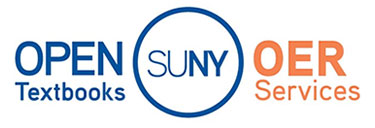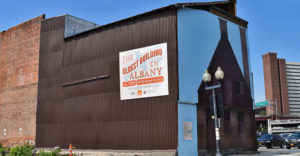
It’s a mantra that has been present for some time now at SUNY – Access + Completion = Success. But access isn’t just about getting into school. Students need the ability to use technology and learning tools to do the work needed to complete.
A key resource to success is the textbooks that bring the lesson to the classroom. Often an expensive purchase for students, campuses across SUNY have been hard at work creating ways to make access to this material easier for students to access. Now, the entire SUNY System, led by SUNY Geneseo, has been chosen to participate in the 2017-18 OpenStax Institutional Partnership Program to encourage use of low cost, peer-reviewed textbooks on campus.
What is the Institutional Partnership Program?
The OpenStax Institutional Partnership Program focuses on the use of Open Educational Resources (OER), which are easily available teaching and learning materials that students may use at little to no cost. The program is designed to help schools increase the use of OER on campus to help lower the cost of course materials.
In order to become part of this program, participants had to go through a tough application process in which they showed an effort to expand the adoption of OER tools across campus. SUNY Geneseo submitted an application, one of 42 nationwide, on behalf of the SUNY system. Those that become partners will become part of a group of schools who collectively advocate for more widespread use of these OER resources to help usage grow. As they further develop the expansion, these same schools will also receive individualized consulting from OpenStax to improve their efforts. With the system represented, all SUNY schools can take part in and get representation from OpenStax.
OER through the years
OER has been growing popularity at SUNY. Originally, Open SUNY Textbooks started off an Innovative Instructional Technology Grant (IITG) that provided incentive funding to invite faculty to create open textbooks that would build a community for creating cost-effective course readings, engage libraries in publishing service and infrastructure, promote reusable academic content models, explore student roles in publishing, and utilize a hybrid distribution model.
In 2011, Tompkins Cortland Community College started things off with an adoption of psychology and math course textbooks. Not only did this adoption of OER help save students money, but during the same period, retention, completion, and grades all improved.
 This effort grew into SUNY OER Services thanks to the SUNY IITG grant, which now supports the adoption, adaption, and distribution of openly licensed content across SUNY. Through the years, the growth has been impressive.
This effort grew into SUNY OER Services thanks to the SUNY IITG grant, which now supports the adoption, adaption, and distribution of openly licensed content across SUNY. Through the years, the growth has been impressive.
- In 2016, five SUNY community colleges – Monroe, Tompkins Cortland, Clinton, Herkimer, and Mohawk Valley – successfully applied for funding through Achieving the Dream (AtD) to create OER degree programs on their campuses.
- The 2017 New York State budget even allocated $4 million to support OER in high-enrollment general education courses across SUNY.
“Throughout SUNY, we continue to innovate to increase access to higher education, reduce student costs and debt, and help more students succeed in graduating on time,” said Carey Hatch, associate provost for academic technologies and information services at SUNY. “SUNY Geneseo is coordinating our System level OER efforts, and we are proud to be a part of the OpenStax Institutional Partnership Program.”
The future of these open resources appears bright. Last year’s partner schools have seen a 55 percent increase in the amount of students using OER, saving an additional $1.7 million in the coming academic year. By comparison, SUNY Open Education Resources saved students an estimated $494,000 in textbook costs for the 2016-17 academic year.
With the cost of OER and those textbooks so low, both for electronic versions or traditional print versions, the number of users can only be expected to grow in the future.



